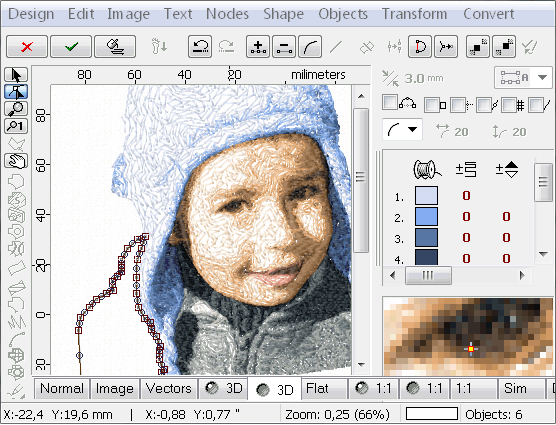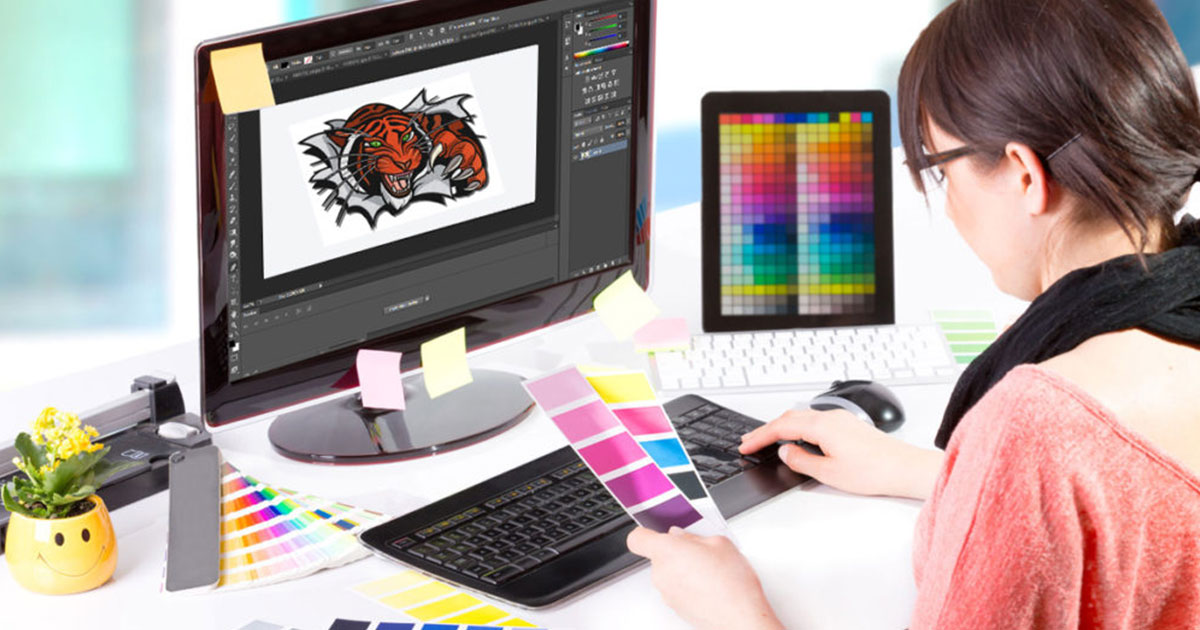Custom Digitizing for Embroidery: Tailored to Your Demands
Custom Digitizing for Embroidery: Tailored to Your Demands
Blog Article
Understanding the Needlework Digitizing Refine: Your Ultimate Guide
Needlework digitizing is a precise craft that needs precision and competence to convert detailed styles right into digital layouts for device embroidery. As craftsmens begin on this trip to master the embroidery digitizing procedure, an extensive understanding of the basics sets the structure for quality.

Comprehending Needlework Digitizing Essentials
Needlework digitizing fundamentals develop the foundation whereupon intricate layouts are converted right into machine-readable formats for accurate sewing. This preliminary step in the embroidery digitizing process is critical for making certain that the final embroidered product is a faithful representation of the original design. Recognizing needlework digitizing essentials involves realizing key ideas such as stitch kinds, stitch instructions, density, padding, and pull payment.
Stitch types play a vital function in figuring out the aesthetic and textural end result of the embroidered design. By choosing the appropriate stitch kind, whether it be satin, fill, or running stitch, digitizers can accomplish the desired impact and enhance the total quality of the needlework. In addition, sew instructions influences the circulation and dimension of the design, while density figures out the spacing and insurance coverage of the stitches.
Moreover, rug stitching gives stability to the design by safeguarding the material and protecting against distortion during the needlework process. Draw settlement is an additional essential consideration to combat the all-natural tendency of fabric to contract when sewn. Mastering these embroidery digitizing basics is fundamental for creating professional-quality embroidered products.
Selecting the Right Digitizing Software Program
Choosing the proper digitizing software application is a critical choice that considerably impacts the efficiency and high quality of the embroidery digitizing procedure. Digitizing for Embroidery. When selecting the best digitizing software application, it is necessary to think about aspects such as the complexity of styles you prepare to develop, the user-friendliness of the software application, the level of client support offered, and the compatibility with your embroidery maker
There are different digitizing software choices available in the marketplace, ranging from basic programs for novices to innovative software program for professional digitizers. Some popular choices include Wilcom EmbroideryStudio, Hatch Embroidery Software Program, and PulseID. These software provide a large range of devices and features to assist you develop intricate layouts effortlessly.
Prior to choosing, it is suggested to discover the different software application options via complimentary trials or demos to establish which one ideal suits your demands. Furthermore, checking out testimonials and looking for recommendations from experienced digitizers can offer valuable insights right into the staminas and weak points of each software application plan (Digitizing for Embroidery). By meticulously assessing your demands and comparing the features of various digitizing software application, you can make an enlightened option that improves your needlework digitizing process
Digitizing Devices and Strategies

Optimizing Style Settings for Needlework
Understanding click resources the intricacies of layout settings is basic in attaining ideal lead to the needlework digitizing procedure, structure upon the foundation laid by understanding digitizing tools and methods. When maximizing style settings for needlework, it is necessary to consider variables such as stitch kind, thickness, underlay, pull settlement, and registration. Sew type selection impacts the overall look of the style, with options like satin, fill, and running stitches offering different structures and impacts. Density refers to the spacing and density of stitches, influencing the style's coverage and sturdiness. Correct rug sewing gives stability and prevents fabric distortion, specifically for intricate designs or on stretchy products. Draw payment changes for material stretch throughout sewing, making certain exact layout duplication. Registration settings straighten various components of the design accurately, preserving total design honesty. By fine-tuning these layout settings, embroiderers can improve the high quality and precision of their stitched productions.

Troubleshooting Common Digitizing Issues
When coming across common digitizing issues throughout the needlework process, it is necessary to recognize the origin and implement reliable remedies promptly. One typical trouble is stitch density concerns, where stitches might be also dense, creating the fabric to tighten, this article or also sparse, causing spaces in the design. Adjusting the stitch thickness setups in the digitizing software can assist fix this concern.
One more constant difficulty is string breaks throughout the embroidery procedure. This can occur as a result of different factors such as incorrect stress setups, boring needles, or using low-grade thread. Making certain appropriate maintenance of the needlework device, including regular needle adjustments and stress changes, can decrease the event of thread breaks.
Furthermore, design registration mistakes can lead to misaligned elements within the embroidery layout. Inspecting the layout alignment in the digitizing software program and making essential modifications before use this link sewing can aid in avoiding this concern. By addressing these usual digitizing concerns quickly and properly, you can make certain a smoother needlework process and high-quality ended up products.
Final Thought
Finally, understanding the embroidery digitizing procedure requires a solid understanding of the fundamentals, the best option of software application, and knowledge of devices and techniques. Optimizing style setups and troubleshooting typical digitizing concerns are important action in making certain premium embroidery outcomes. By following these actions diligently, one can attain precision and performance in the digitizing process.
Report this page